40 years of Mac: the best Mac designs of all time
How many of these impressive Mac designs do you remember?
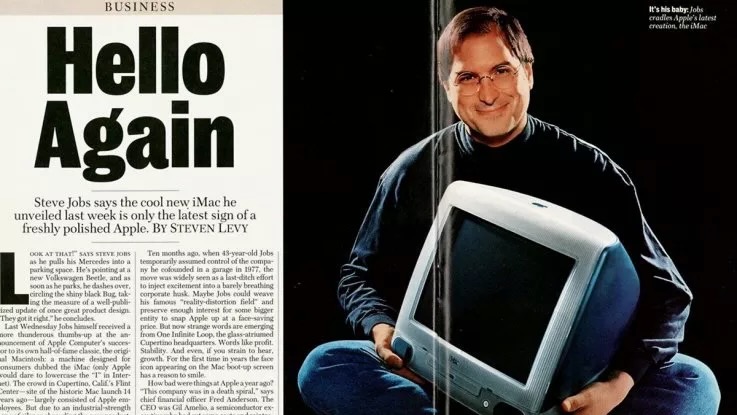
- 15. PowerBook G3 Series "Wall Street"
- 14. PowerBook 100 Series
- 13. iMac G5
- 12. Cylinder Mac Pro
- 11. Twentieth Anniversary Macintosh
- 10. Mac mini (4th Gen)
- 9. Macintosh SE/SE FDHD
- 8. iMac Pro
- 7. iBook G3 "Clamshell"
- 6. iMac G4
- 5. PowerMac G4 Cube
- 4. Macintosh II
- 3. MacBook Air (1st Gen)
- 2. iMac G3
- 1. Apple Macintosh
Way back in 1984, forty years ago, Apple released the first ever Mac. Originally just called the Apple Macintosh and then later rebranded as the Macintosh 128k, it housed specs that are considered incredibly small now but it helped secure Apple as one of the biggest tech brands in the world.
Ever since, Apple has been focused on setting itself apart, with machines like the PowerMac G4 Cube intended to turn heads. However, not every one of them is a design masterpiece but they are iconic in their own right. Though the MacBook Air introduced over 15 years ago hasn't changed all that much in its design, Apple spent a lot of its early life testing the water with new machines, looks, and more. For this reason, it's worth going back in history to find some of the most interesting Apple designs.
To celebrate the forty-year anniversary of the first ever Mac, here are just fifteen of the most iconic Mac designs of all time.
15. PowerBook G3 Series "Wall Street" (1998–1999)
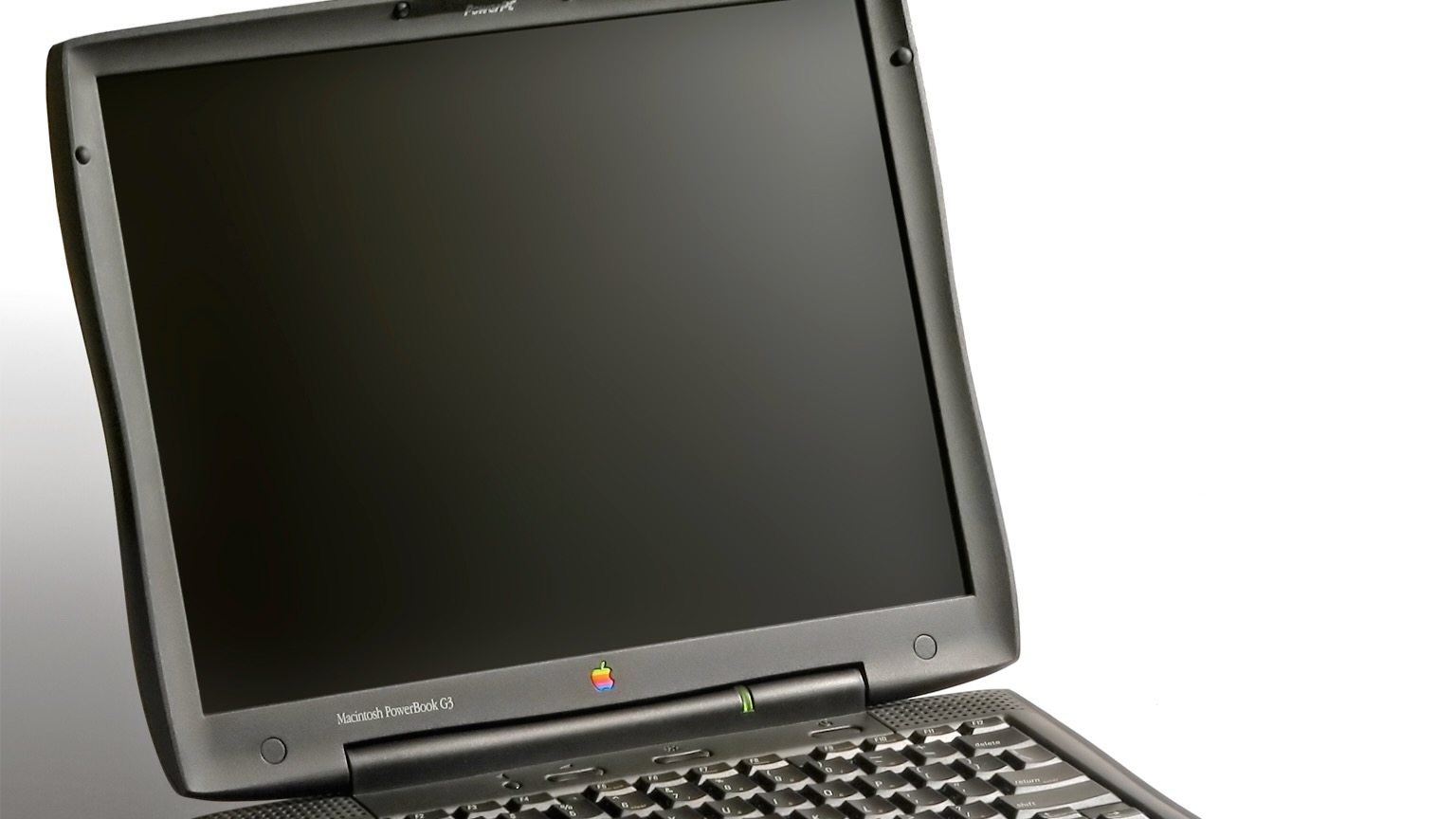
Our list starts with two PowerBooks, although perhaps none is sleeker than this second-generation G3 model. The Wall Street featured up to a 14.1-inch TFT LCD and was the first PowerBook to offer industry-standard ATA optical drives.
However, it had well-known heating issues, so it was quickly replaced by Wall Street II. It would also turn out to be the final Apple computer to feature a rainbow-colored logo and the last to support an Apple Superdrive.
14. PowerBook 100 Series (1991–1996)
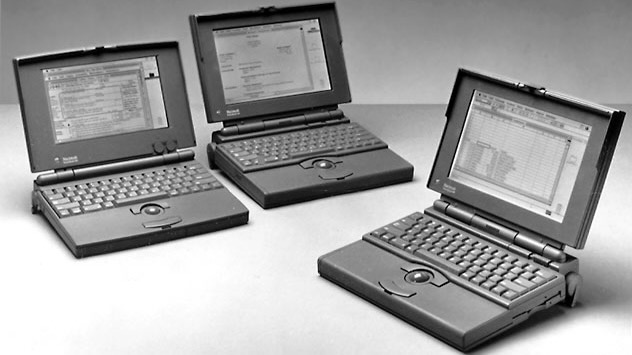
In 2005, Mobile PC magazine named Apple's PowerBook 100 the #1 gadget of all time, according to MacObserver, and that's for a good reason. The PowerBook 100 series was one of the most popular mobile computer lineups in Apple history. The sub-notebooks included many unique features for the time, such as a built-in trackball, compact dark gray cases, and keyboard positioning that allowed for lots of room for palm rests.
Interestingly, after the first-generation PowerBook 100 series succeeded, its design team went to Compaq, which led to delays for future PowerBook 100 series generations.
iMore offers spot-on advice and guidance from our team of experts, with decades of Apple device experience to lean on. Learn more with iMore!
13. iMac G5 (2004–2006)
Back in 2004, the iPod was Apple's hottest product. It's still instantly recognizable thanks to its now iconic white body and control wheel. So it made sense then that the iMac G5 would also feature white plastic.
Beyond the iPod connection, this iMac model was the first where all of the internal components were put into a single flat panel. Additionally, the iMac was offered in 17-inch and 20-inch displays for the first time.
The iMac G5 was the final iMac to use a PowerPC processor and the last to support macOS 9 (Classic). It was replaced by the first Intel-based iMac in January 2006 — the first iMac with a unibody aluminum enclosure.
12. 2nd generation Mac Pro (Cylinder) (2013–2018)

The cylinder Mac Pro has a backstory that's just as interesting as its design. Announced through a "sneak peek" at the Worldwide Developers Conference (WWDC) in June 2013, this second Mac Pro wasn't released until December of that year. Those six months between the product announcement and product release were unheard of at the time, although something similar happened with the first Apple Watch less than two years later.
Featuring a polished reflective aluminum cylinder, the second-gen Mac Pro included a central thermal dissipation core and was vented by a single fan. Although it was released in black, a single red version was made and sold for nearly $1 million for the PRODUCT(RED) charity.
Despite lots of hype, the cylinder Mac Pro ultimately didn't get much love from Apple. As a result, it was discontinued six years after its release — without a single hardware update during that entire span. Regardless, its design will long be remembered.
11. Twentieth Anniversary Macintosh (1997–1998)

The original Mac brought personal computing into the mainstream like nothing before it. Unfortunately, by the mid-1990s, Apple had largely lost its way. So how else can one explain the overpriced and bloated Twentieth Anniversary Macintosh?
Considered forward-looking at the time, this Mac was released to celebrate Apple's two-decade anniversary. It retailed for $7,499 when it was released in March 1997, a stunningly high price tag equivalent to nearly $22,000 today. For that, you got the first flatscreen Mac in history, a custom sound system by Bose, and, perhaps better yet, a limo ride to pick up your machine.
Not surprisingly, when Steve Jobs (finally) returned to Apple in July 1997, the Twentieth Anniversary Macintosh was among the first products he killed to make the company he co-founded profitable again.
10. Mac mini (4th Gen) (Space Gray Unibody) (2018–present)

The first Mac mini arrived in 2005 to serve consumers and business users who wanted a Mac but didn't need extras like keyboards, mice, and monitors. Over the years, while the materials used for the body of the Mac mini have sometimes changed, it looks nearly the same as that first model released almost 20 years ago.
The fourth-generation Mac mini, the only current Mac product on the list, features a space gray unibody. Along with the current Mac Pro, this model was also one of the final Macs to feature Intel inside.
Interestingly, the current Apple silicon-based Mac mini (released in 2022) does not come in space gray. Instead, it and the 2022 Mac Studio, which looks like two stacked Mac minis, are only available in silver.
9. Macintosh SE/SE FDHD (1987–1990)
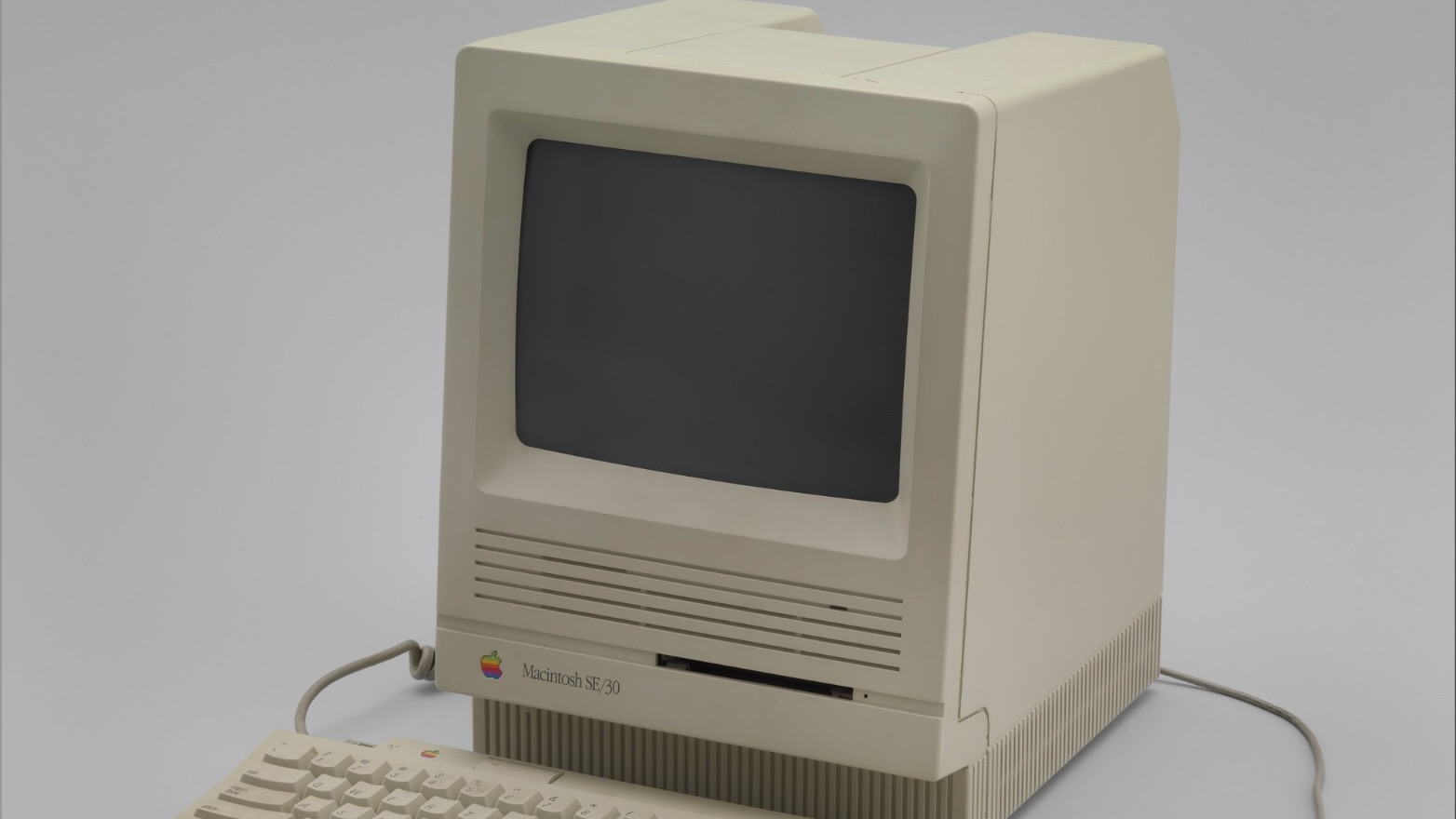
This classic Mac (which still included a black/white display) offered a platinum case and a bay for a floppy disk or other internal hard drive. The SE FDHD added a SuperDrive and a larger hard drive but removed a second floppy drive.
In my mind, this is one of the most beautiful Macs ever produced, although eight others are even better, as you can see below. You can see one of these Macs in Seinfeld episodes and, like the PowerMac G4 Cube below, in the Metropolitan Museum of Art.
8. iMac Pro (2017–2021)
One of the reasons Apple failed to throw hardware updates to the second Mac Pro was this exciting product, the iMac Pro. Like the cylinder Mac Pro, this Mac had an expensive price tag, a long gestation period, and never saw a hardware update during its lifespan. And yet, it made this list because of its somewhat unique design. Unlike previous iMacs up until this point that came in either white or silver, the iMac Pro came in an exclusive darker Space Gray finish.
Inside, the "most powerful Mac ever made" offered up to an 18-core Intel Xeon processor, 5K display, and a custom Apple M2 chip to store encrypted keys. Starting at $4,999, the highest-priced iMac Pro could set you back over $14,000. It was replaced in 2022 by the Mac Studio.
7. iBook G3 "Clamshell" (1999–2001)

In 1999, Steve Jobs introduced a hybrid of the iMac and the PowerBook and called it the iBook. A predecessor to the MacBook, the iBook G3 "Clamshell" came in white with five accented color choices: Tangerine, Blueberry, Graphite, indigo, and an Apple Online Store exclusive, Key Lime. Besides the bright color options, the Clamshell was known for its built-in wireless networking, a handle in its casing, and unique shape.
Unfortunately, the Clamshell iBook was replaced by the boxy iBook all-white G3 Dual USB ("Snow") after less than two years on the market.
6. iMac G4 (2002–2004)
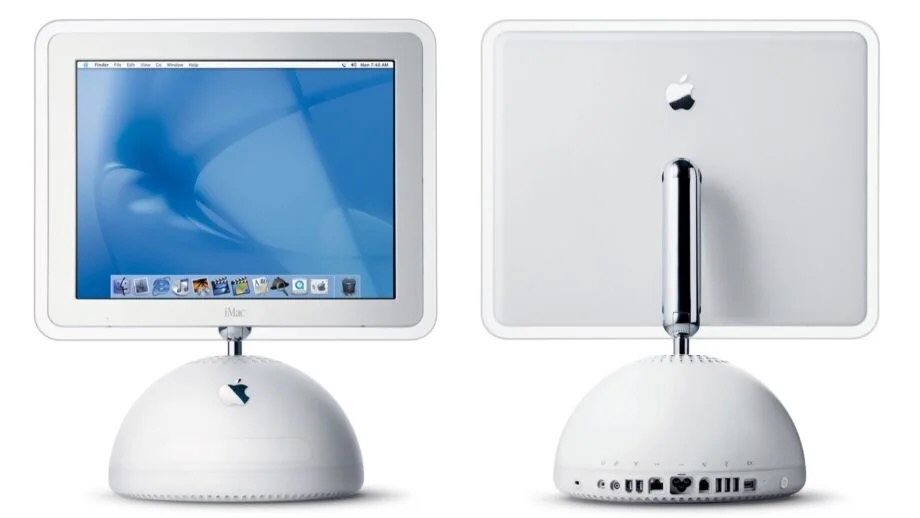
One of the most iconic Apple products in history (see #2) was replaced in 2002 by this model. The iMac G4 featured an LCD mounted on an adjustable arm that sat above a hemisphere containing an optical drive and a fourth-generation PowerPC G4 processor. The iMac G4 was only available in white, and came with an Apple Pro Keyboard and Apple Pro Mouse. Apple also offered optional Apple Pro Speakers that were better than the iMac G4's internal speakers.
Even though the iMac G4 was on the market for less than three years, it's one of the most remembered iMac models in recent decades. Despite this, it wasn't nearly as popular as the previous version. This is most likely because it was more expensive due to higher production costs.
5. PowerMac G4 Cube (2000–2001)

Jonathan Ive designed the Power Mac G4 Cube, which could have easily topped this list of the 15 best Mac designs of all time. Unfortunately, its short life pushed it down to #5.
Launched in mid-2000, the Power Mac G4 Cube measured 7.7 inches cubed and was housed in clear acrylic glass. Priced in the middle of the then-Mac product range, the Cube won various design awards after its release. But occasional cosmetic defects, limited expandability, and a hefty price tag forced Apple to discontinue the product after just a year on the market.
Today, the Power Mac G4 Cube is considered one of the few product failures from the second Steve Jobs era at Apple. However, one of the Cubes is displayed at the Metropolitan Museum of Art, so that has to be worth something.
4. Macintosh II (1987–1991)
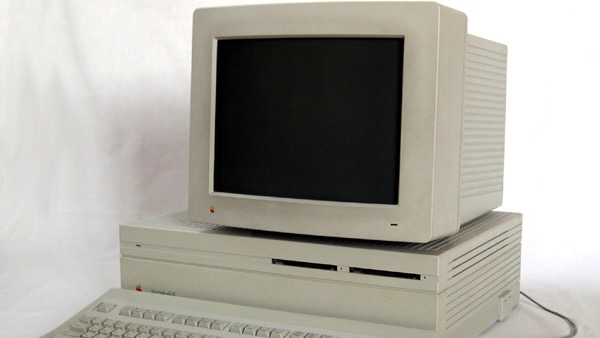
On the market from March 1987 until January 1990, the Macintosh II is noted for being the first Apple Mac without an attached built-in display. Instead, the included monitor rested on top of the case.
This design was similar to other systems available at the time, including the Amiga 1000 and IBM PC. In addition, the Macintosh II was the first Mac to support color graphics, which is likely why its starting price was around $5,500, or the equivalent to over $13,000 today.
3. MacBook Air (1st Gen) (2008–2010)
Over the years, Apple has released many amazing commercials highlighting its newest products. Although it doesn't rank nearly as high as the "1984" ad introducing Macintosh or the first official iPhone commercial, the 2008 ad for MacBook Air is pretty good, as you can see above. In the ad, Apple pulls out the world's thinnest (1.9 cm) notebook from a manila office envelope, causing millions of Apple fans to open their wallets.
This wedge shape MacBook Air was the first Apple computer with a speedy solid-state drive. In addition, it featured an LED-backlit display, a full-size keyboard, and a large trackpad. It was also the first Apple notebook since the 1997 PowerBook 2400c that didn't offer a removable media drive. The MacBook Air eventually became Apple's best-selling Mac.
Earlier this year, Apple introduced the highly-rated fourth-generation MacBook Air. Like its predecessors, it's now the best Mac on the market.
2. iMac G3 (1998–2003)
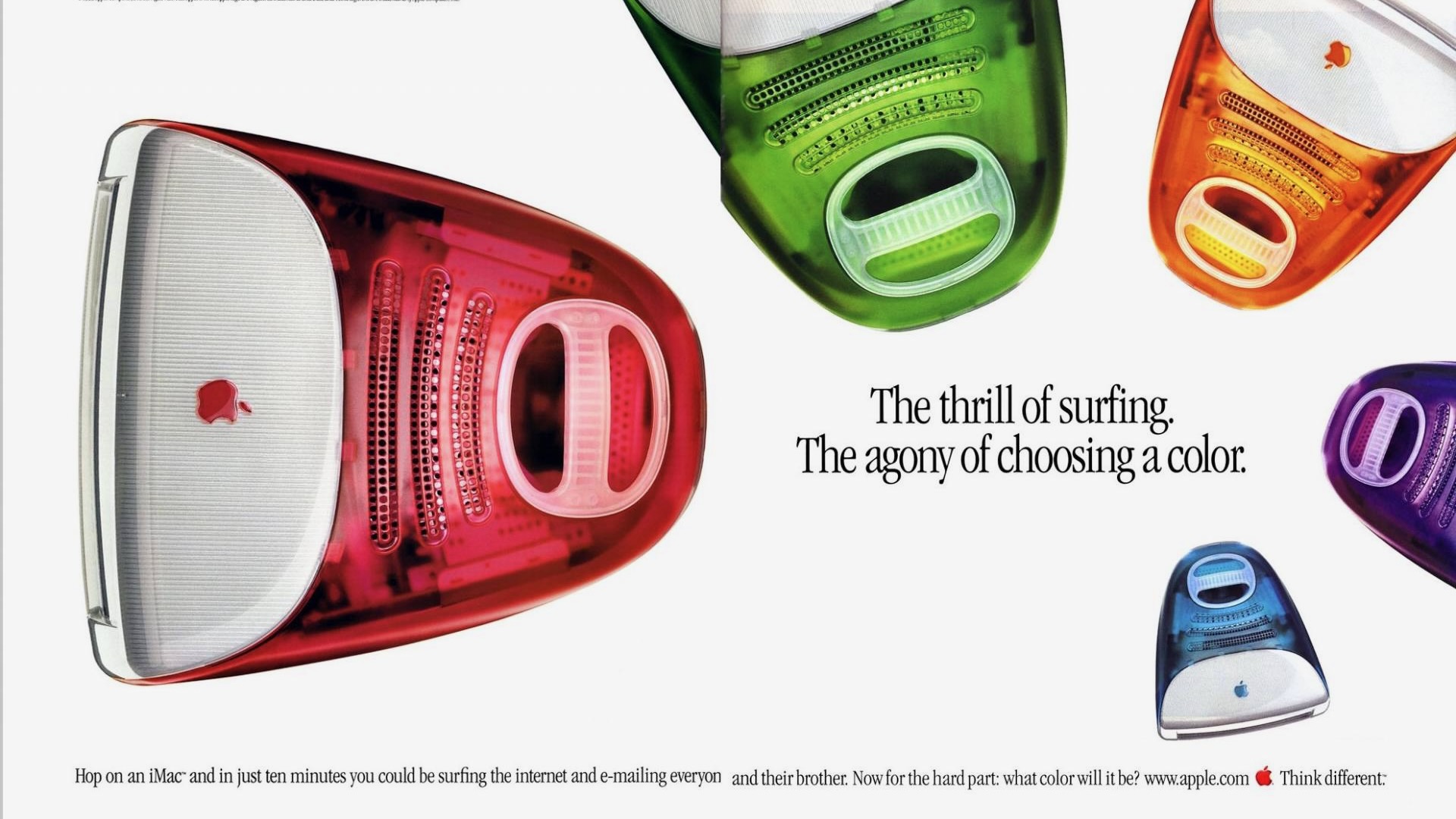
When Apple enthusiasts think of the iMac, many still think of the colorful iMac G3. Although it was only on the market for three years, the iMac G3 changed the personal computing market and reenergized Apple after years of financial troubles. After returning to Apple, the see-through Mac was Steve Jobs’ first new product.
A replacement for Apple’s Performa lineup, the iMac G3 saw continual updates throughout its life span, as processor speeds, video RAM, and hard-drive capacity improved.
Nothing about the computer, however, was more advertised than its many color choices. After launching in Bondi Blue, the iMac G3 was offered in 12 other colors, including Blueberry, Grape, Tangerine, Lime, Strawberry, Graphite (SE), indigo, Ruby, Sage, Snow (SE), Blue Dalmatian, and the still talked about Flower Power.
1. Apple Macintosh (1984–1985)
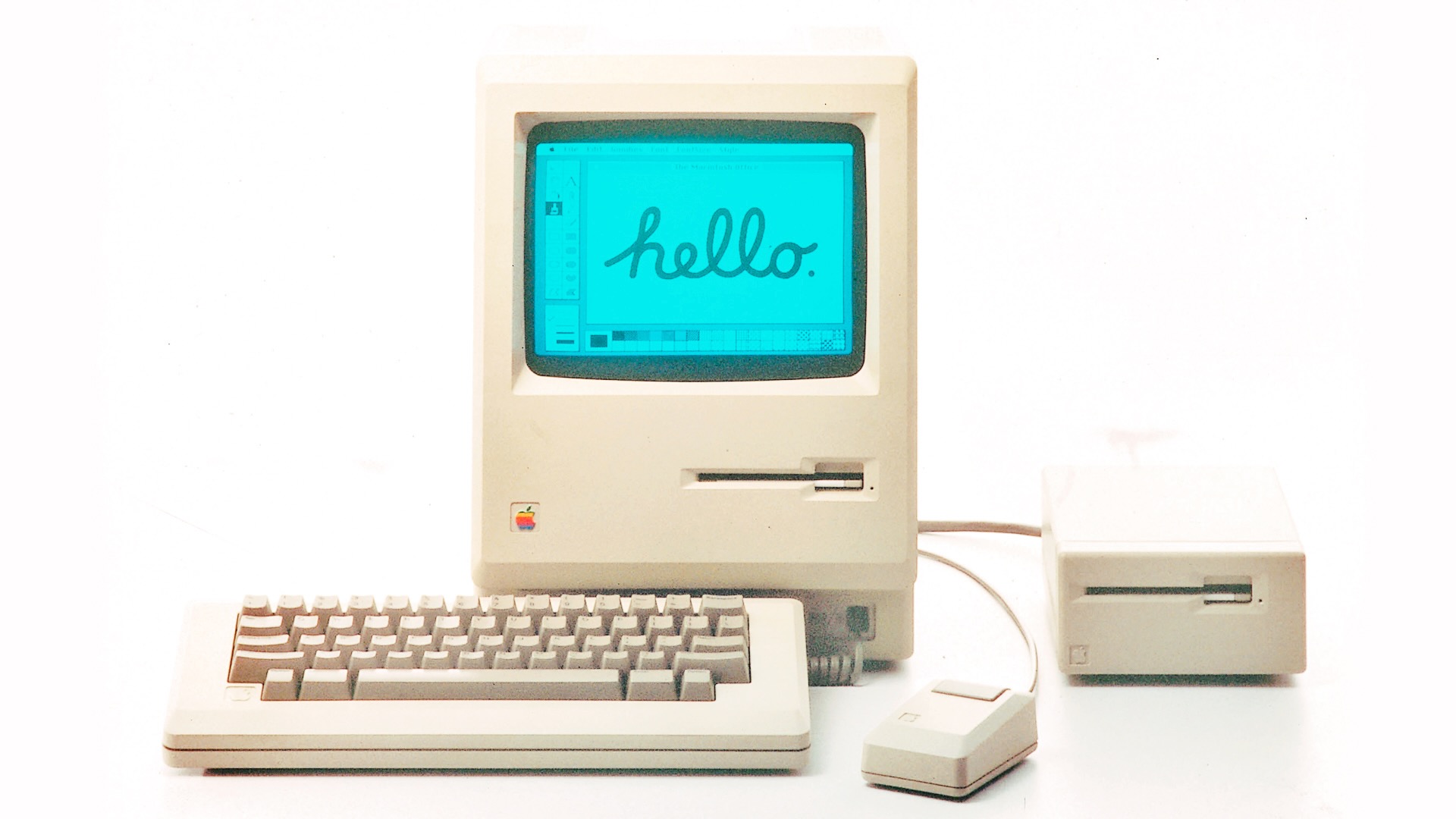
Not surprisingly, our list ends at the beginning. The first Apple Macintosh, eventually called Macintosh 128K, was introduced to the world during a Ridley Scott-produced television commercial, "1984," during that year's Super Bowl. It was demoed by Steve Jobs two days later, and by May of that year, 70,000 units were sold.
The Macintosh 128K (for its 128KB of RAM) featured a Motorola 58000 microprocessor, a 9-inch CRT with a fixed resolution of 512x512 pixels, and a single 400KB, single-sided 3 1/2 floppy disk drive. And there was no internal mechanical storage.
In September 1984, Apple revealed the Macintosh 512K, which expanded memory four-fold. However, the original model remained on the market until Oct. 1, 1985.
So much history
It will be interesting to see what Apple has planned for Mac in the coming years. Although it didn't make the list, the colorful iMac (2023) suggests Apple might once again push Mac designs into fun, new directions after years of mostly dull designs. In particular, it will be interesting to see whether we'll ever see a machine again that comes in Bondi Blue or Flower Power or offers a design worth placing in a museum. Time will tell.

Bryan M. Wolfe has written about technology for over a decade on various websites, including TechRadar, AppAdvice, and many more. Before this, he worked in the technology field across different industries, including healthcare and education. He’s currently iMore’s lead on all things Mac and macOS, although he also loves covering iPhone, iPad, and Apple Watch. Bryan enjoys watching his favorite sports teams, traveling, and driving around his teenage daughter to her latest stage show, audition, or school event in his spare time. He also keeps busy walking his black and white cocker spaniel, Izzy, and trying new coffees and liquid grapes.
